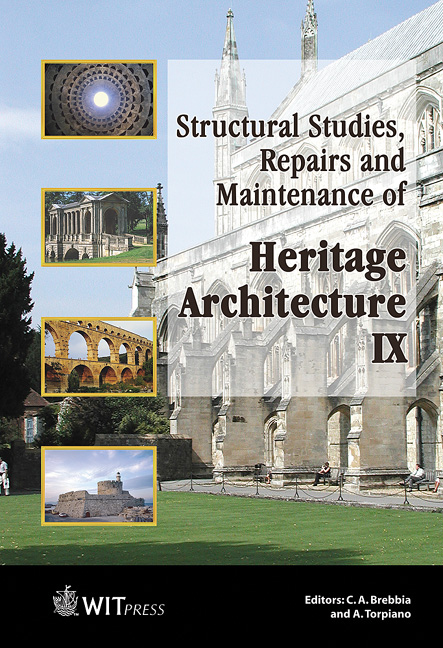Methodologies For The Vulnerability Analysis Of Historic Centres In Italy
Price
Free (open access)
Transaction
Volume
83
Pages
12
Published
2005
Size
1,769 kb
Paper DOI
10.2495/STR050271
Copyright
WIT Press
Author(s)
L. Binda
Abstract
During the last few decades several approaches to the study of the vulnerability of historic centres have been proposed by different research groups in the Mediterranean countries under the seismic risk. The aim is to (i) provide the responsible authorities with information and parameters for the most appropriate vulnerability analysis methods, (ii) support the designers in their repair and prevention projects. As an example to clarify the results reached by the research, a methodology proposed within a research supported by the Protection Department of the Italian Minister Council is presented. The approach is proposing an investigation on site and in a laboratory based on a \“minimal” low cost program. The knowledge of existing buildings is approached by considering different levels of analysis. The methodology, calibrated on four historic centres situated in Umbria (Italy), allowed us to define an abacus of the typical collapse mechanisms which can be used for analytical methods based on the application of single or combined kinematic models involving the equilibrium of macro-elements. Keywords: masonry structures, on site and laboratory investigation, vulnerability analysis. 1 Introduction The earthquake which struck Umbria and Marche regions in 1997 only occurred 18 years after the one which in 1979 hit Val Nerina (part of Umbria). In this part of Umbria some historic centres were retrofitted and again damaged in 1997. The 1997 earthquake gave the occasion to learn about the effectiveness of the repair and retrofitting techniques. In fact most retrofitting mainly performed with upgrading interventions (substitutions of timber floors and roofs with r.c.,
Keywords
masonry structures, on site and laboratory investigation, vulnerability analysis.




